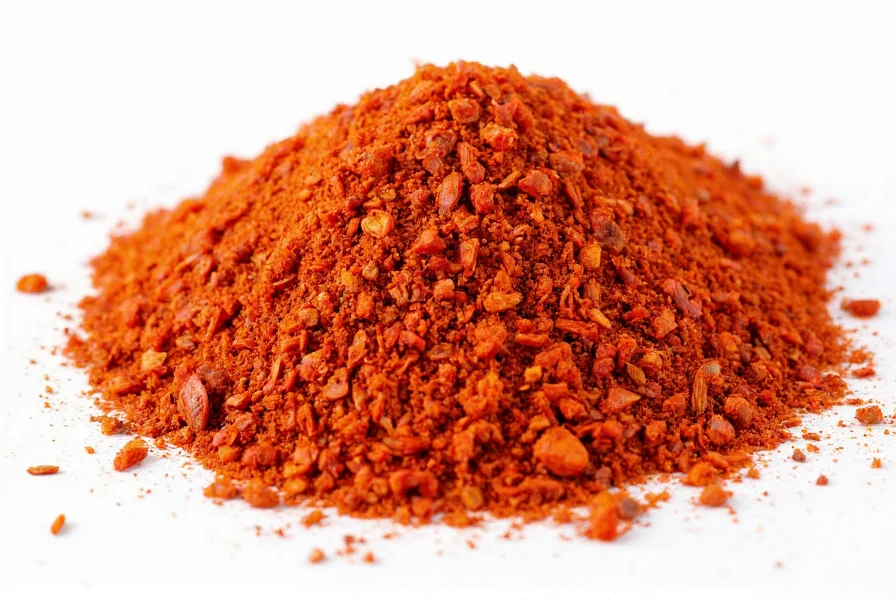Understanding what crushed red pepper flakes are begins with their composition. These vibrant red flakes consist of coarsely ground dried chili peppers, primarily from the Capsicum annuum species, including cayenne, jalapeño, and other hot pepper varieties. Unlike finely milled chili powder, crushed red pepper retains small pieces of pepper skin and seeds, creating a textured spice with varying heat levels in each flake.
Composition and Production Process
Manufacturers produce crushed red pepper flakes by harvesting ripe red chili peppers, removing stems, and air-drying them until brittle. The dried peppers then undergo a controlled crushing process that preserves both the fruit's flesh and seeds. This method distinguishes them from crushed red pepper flakes vs chili powder, as chili powder often includes additional spices like cumin and garlic powder, while red pepper flakes contain only辣椒 components.

Flavor Profile and Heat Measurement
These flakes deliver a complex flavor profile: initial fruity notes followed by building heat. Their Scoville Heat Unit (SHU) range typically falls between 1,500–20,000 SHU, depending on the pepper varieties used. The inclusion of seeds increases heat intensity, as capsaicin—the compound responsible for spiciness—concentrates there.
| Spice Type | Scoville Range | Texture | Primary Ingredients |
|---|---|---|---|
| Crushed Red Pepper Flakes | 1,500–20,000 SHU | Coarse, flaky | Dried chili peppers (seeds included) |
| Cayenne Powder | 30,000–50,000 SHU | Fine powder | Ground cayenne peppers (often seedless) |
| Chili Powder | 500–5,000 SHU | Fine powder | Mixture of chili peppers and other spices |
Culinary Applications and Usage Tips
Chefs and home cooks use crushed red pepper flakes to enhance dishes without overwhelming other flavors. Their coarse texture allows for controlled heat distribution. Sprinkle them on pizza, pasta, roasted vegetables, or stir-fries during cooking or as a finishing touch. For how to use crushed red pepper flakes effectively, add them early in cooking for milder heat infusion or at the end for sharper spiciness.
When substituting, remember that what is the difference between red pepper flakes and cayenne matters significantly. Cayenne powder delivers more consistent, intense heat, so use approximately 1/2 teaspoon cayenne for every 1 teaspoon of red pepper flakes. Paprika offers a milder alternative without significant heat.
Storage and Shelf Life
Preserve freshness by storing crushed red pepper flakes in an airtight container away from light and heat. Properly stored, they maintain optimal flavor for 1–2 years. Discard if they lose vibrant color or develop a musty smell, as degraded spices provide diminished flavor and heat.

Nutritional Considerations
A single teaspoon (0.5g) contains minimal calories (3) but delivers vitamin A, vitamin C, and capsaicin. Research suggests capsaicin may boost metabolism and provide anti-inflammatory benefits, though these effects require regular consumption as part of a balanced diet.
Common Misconceptions Clarified
Many confuse crushed red pepper flakes ingredients with other spice blends. Authentic red pepper flakes contain only dried peppers—no salt, fillers, or additional spices. Check labels to avoid products with anti-caking agents or undisclosed additives, which compromise purity and flavor.
Frequently Asked Questions
Are crushed red pepper flakes the same as chili flakes?
Yes, crushed red pepper flakes and chili flakes refer to the same product—dried, coarsely ground hot peppers. Regional naming differences cause the variation, but they're interchangeable in recipes.
Can I make crushed red pepper flakes at home?
Absolutely. Dry ripe red chili peppers completely, remove stems, then crush them using a mortar and pestle or food processor. For authentic how to make crushed red pepper flakes, include seeds for maximum heat variation.
Why do some crushed red pepper flakes have different heat levels?
Heat variation comes from the mix of pepper varieties used and whether seeds remain included. Since seeds contain more capsaicin, flakes with visible seeds deliver spicier results than those with seeds removed.
What dishes work best with crushed red pepper flakes?
They excel in Italian cuisine (pasta arrabbiata), pizza, roasted vegetables, soups, and marinades. Their texture allows gradual heat release during cooking, making them ideal for dishes requiring layered spice development.











 浙公网安备
33010002000092号
浙公网安备
33010002000092号 浙B2-20120091-4
浙B2-20120091-4